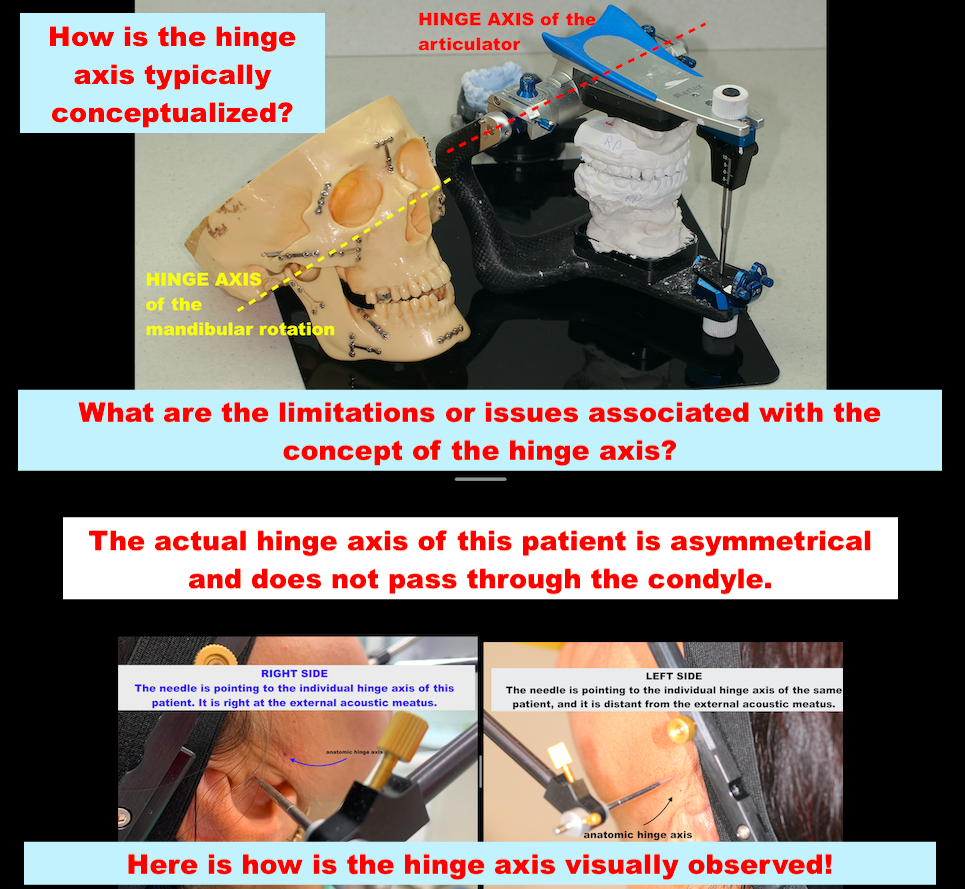
Let’s start with the concept of the HINGE AXIS. We have been taught that the hinge axis is located somewhere in the condyle. If the hinge axis is indeed located within the condyle, then human beings invented the articulator. The articulator replicates the movements and the position of the lower jaw relative to the skull! Working with the articulator is akin to working directly on the human being, given that it replicates the same hinge axis recorded from the patient. After the recording of the hinge axis, we visualize it as depicted in the picture. ONE PROBLEM! Recording the hinge axis on condylography precisely determines the hinge axis. Condylography is a computerized method for determining the hinge axis and tracking the movements of the jaws. After removing the sensors, we can accurately mark the exact location of the hinge axis. CONCLUSION FOR THE RIGHT JOIN: The hinge axis is located at the margin of the external ear duct. While we were taught that the anatomical hinge axis is ty...



